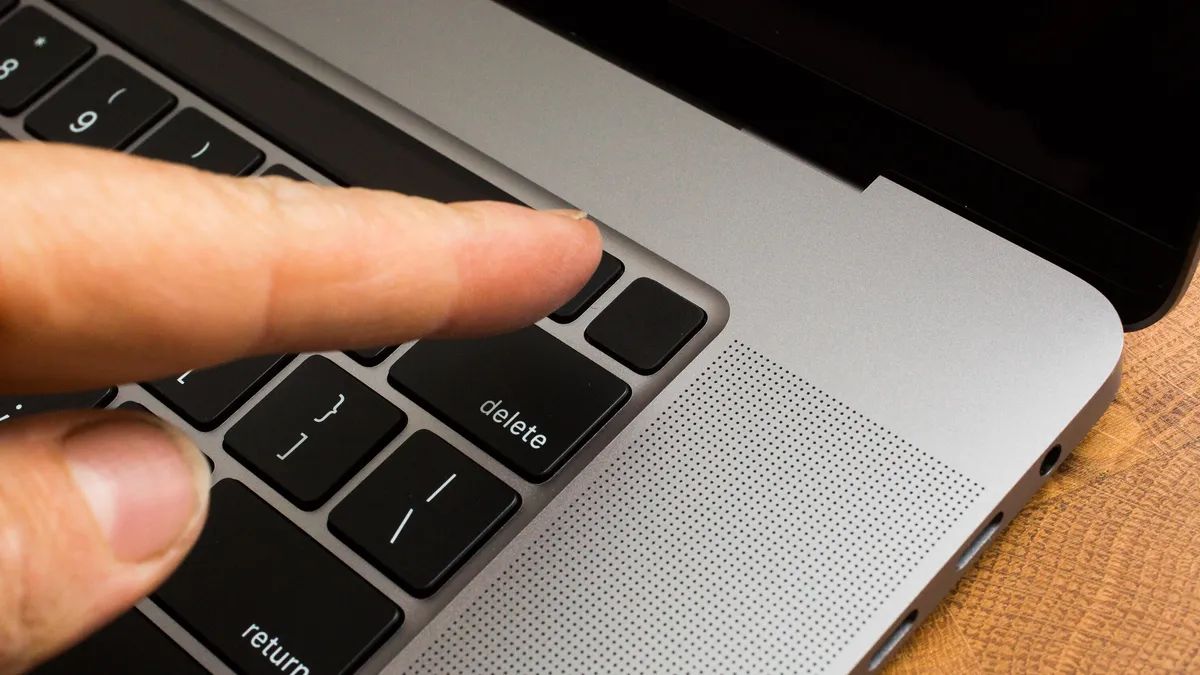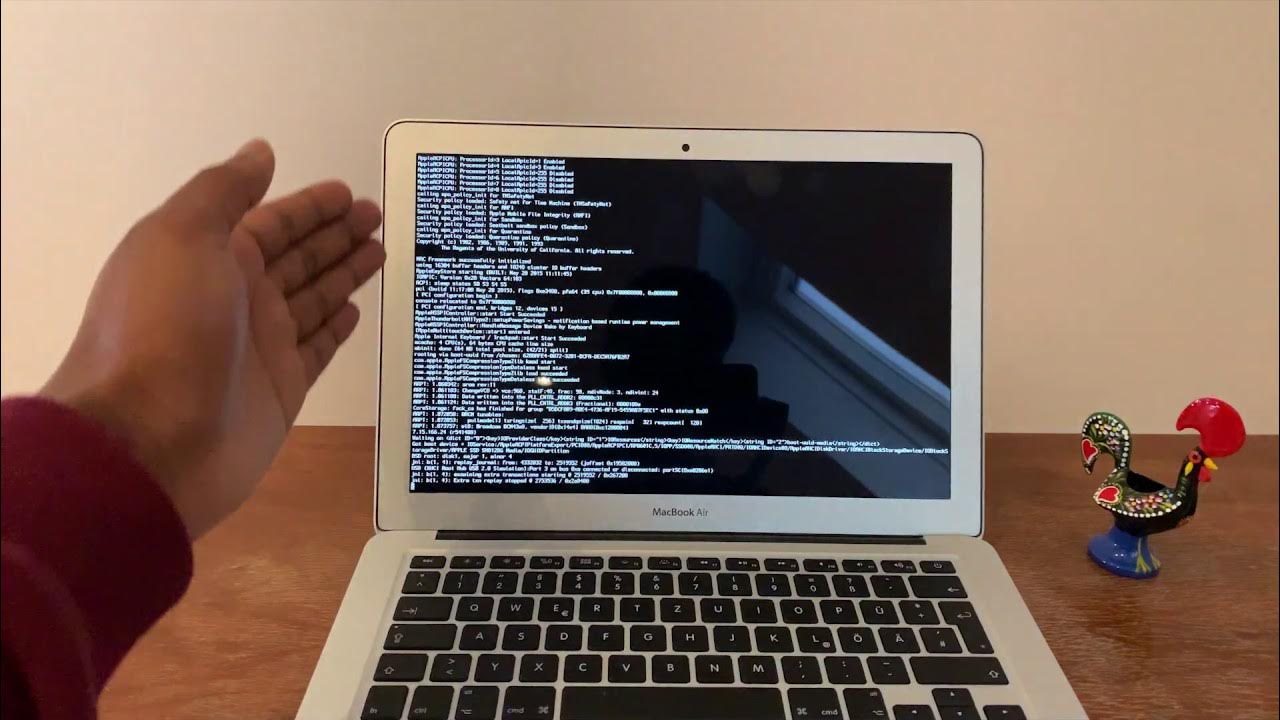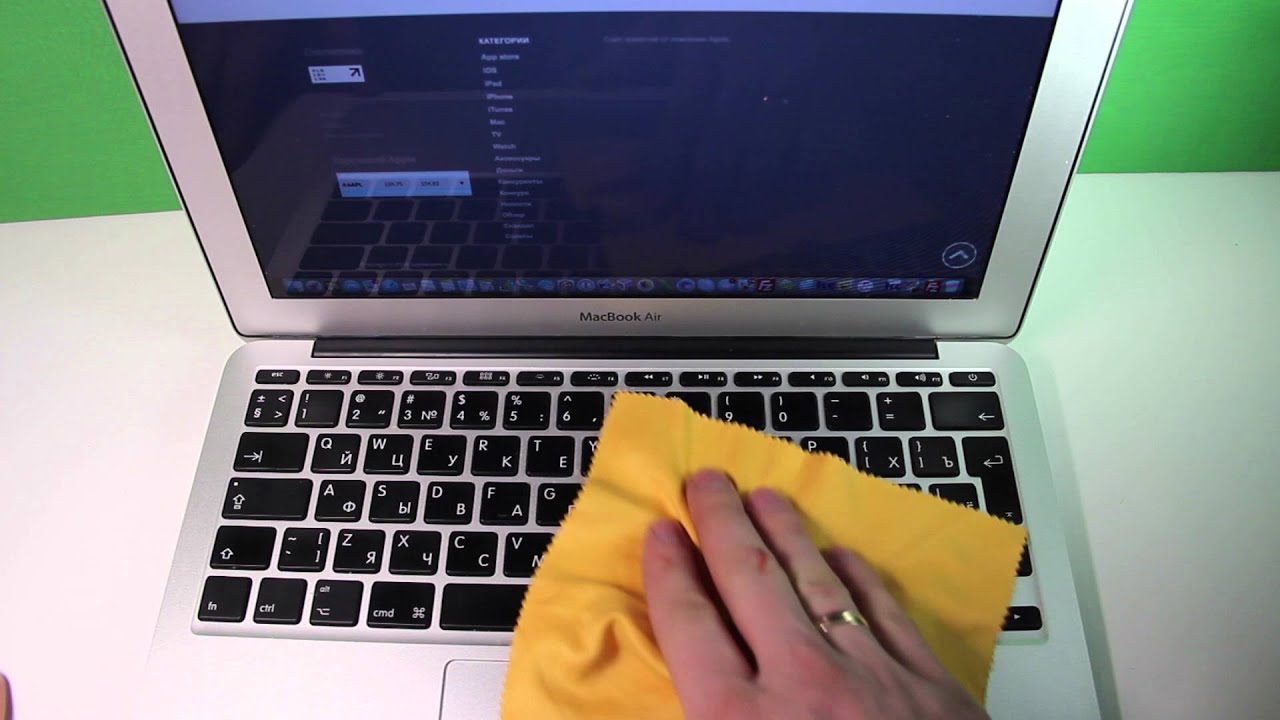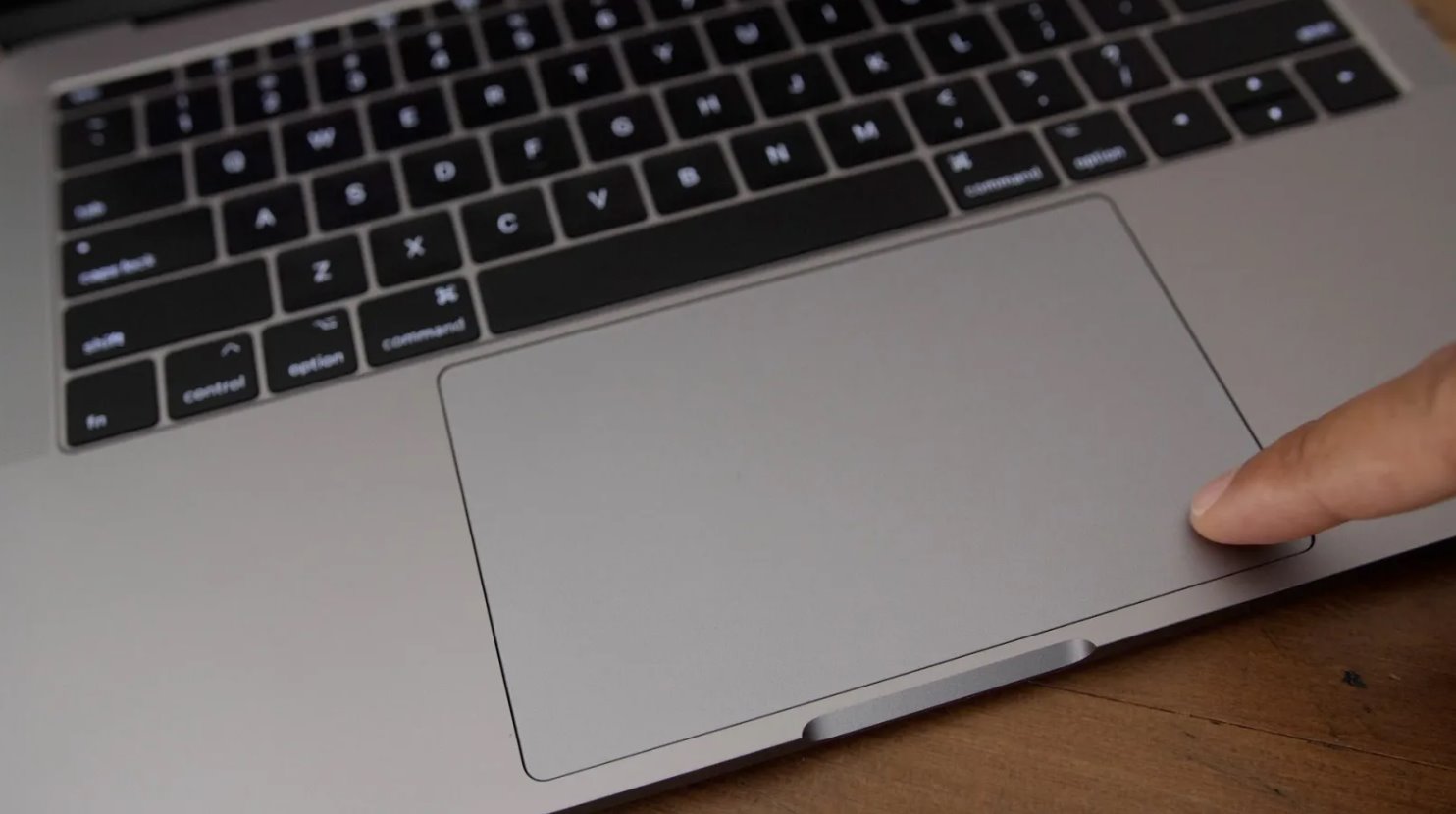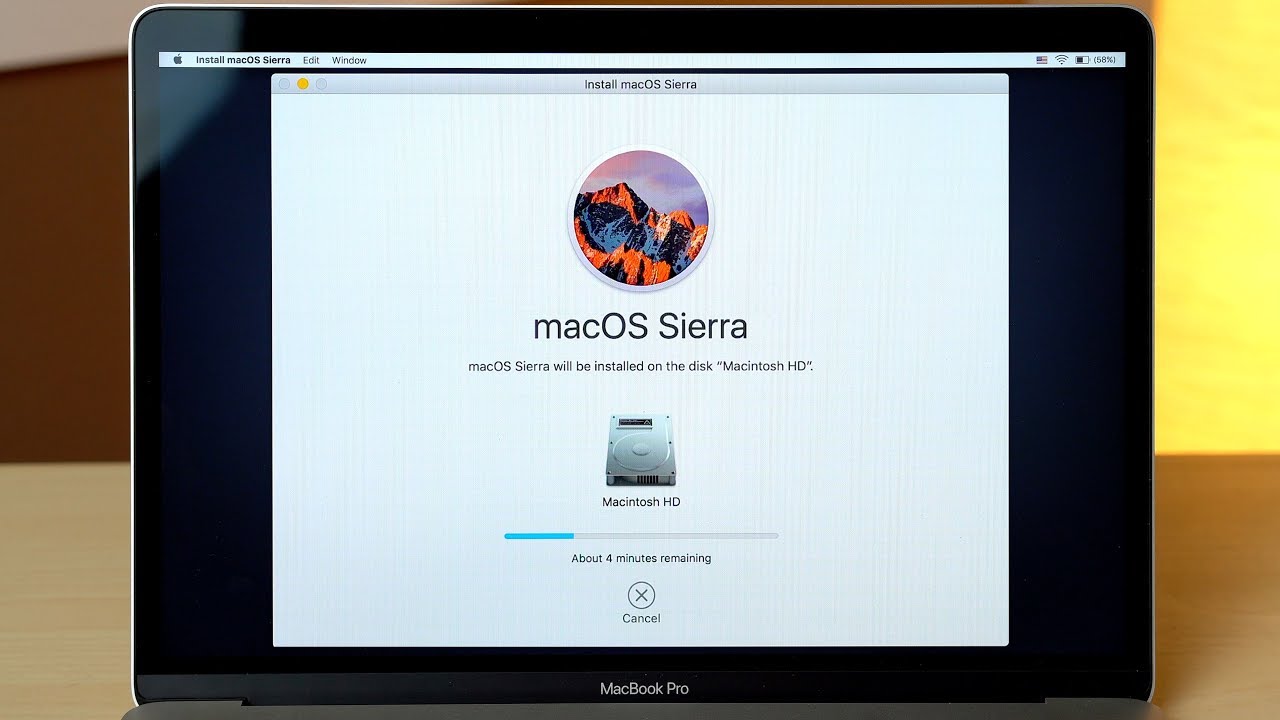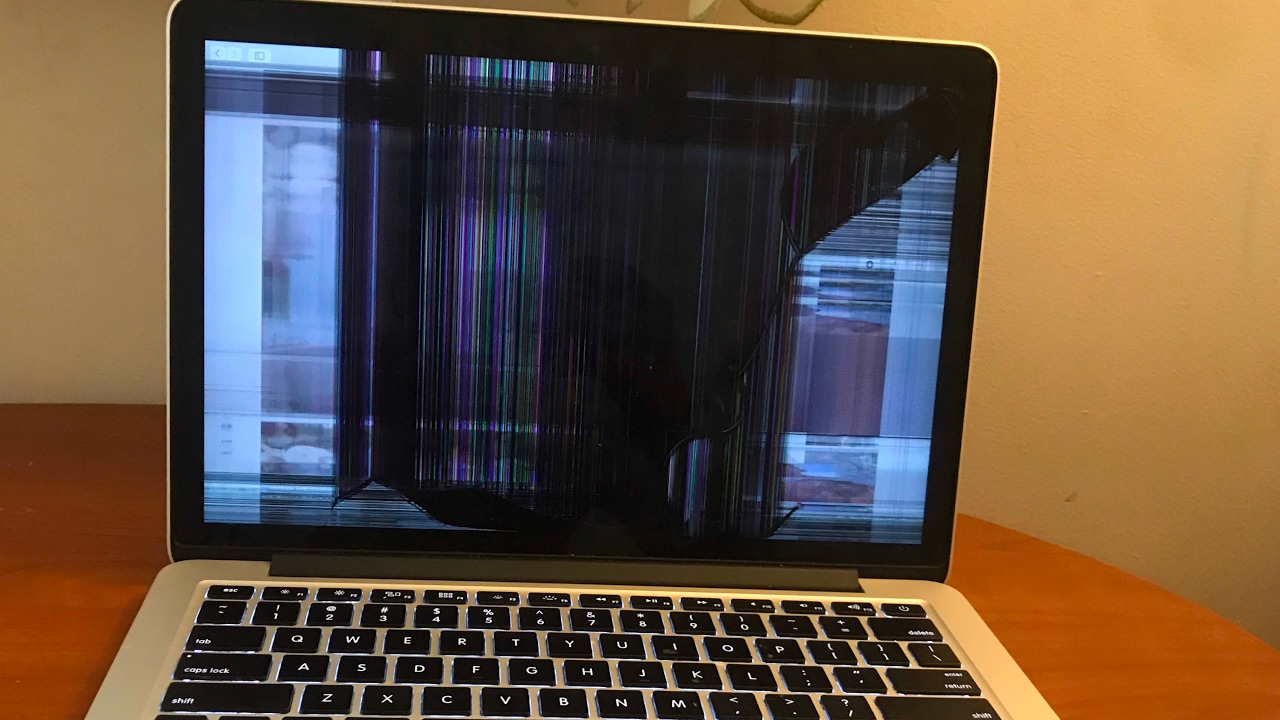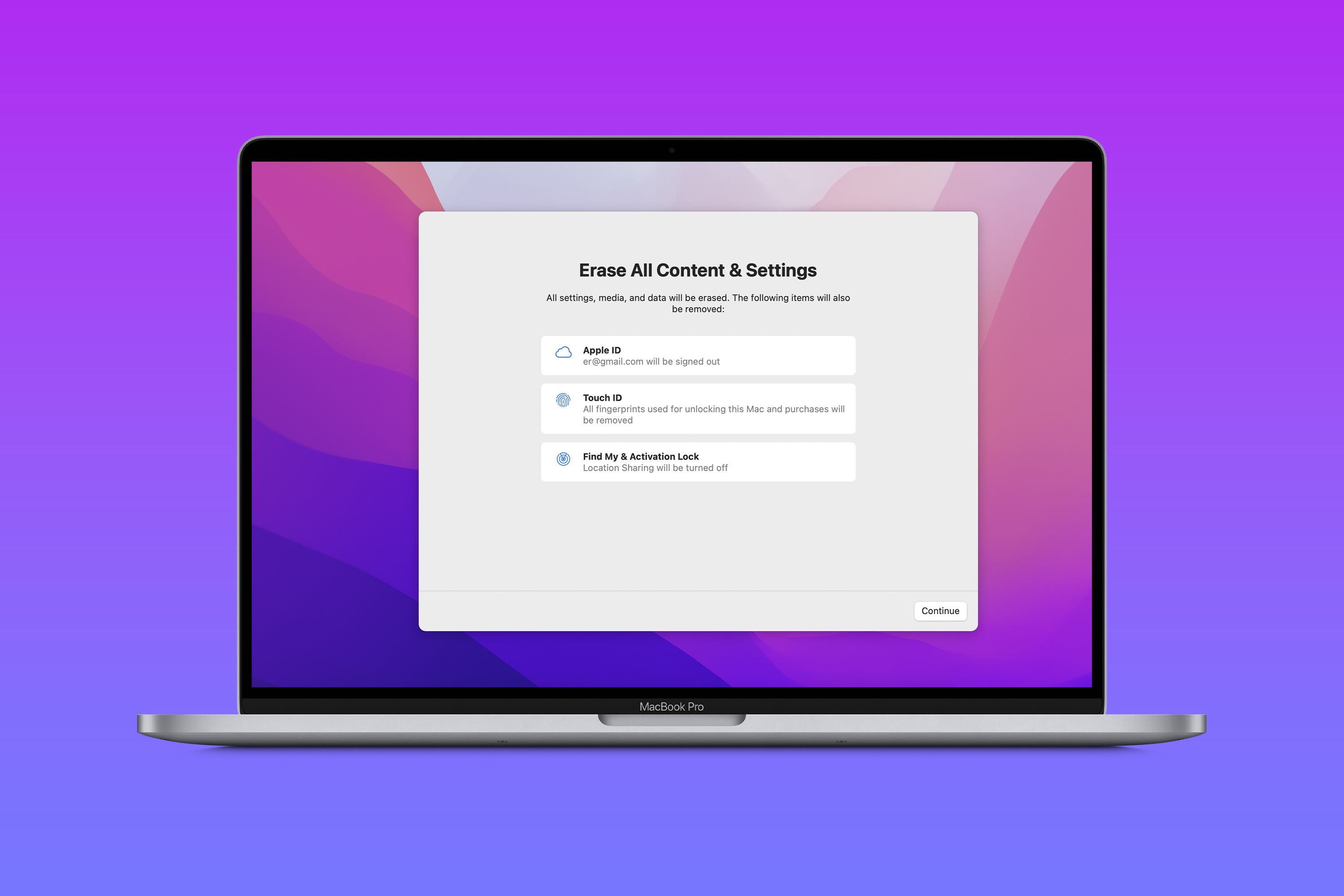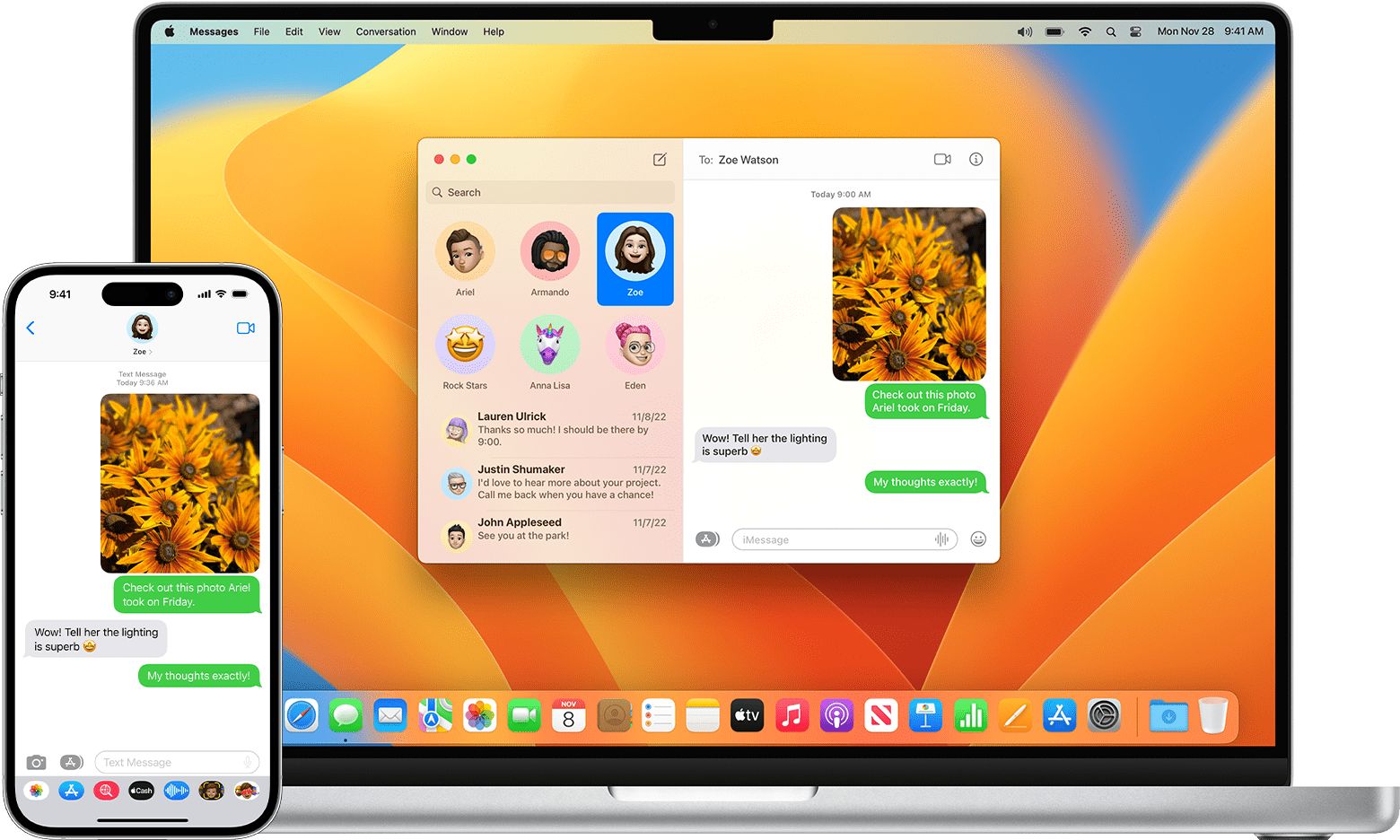Introduction
The MacBook Pro is a powerful and popular laptop that is widely used by professionals and creative individuals. However, just like any electronic device, it may encounter issues or experience sluggish performance over time. In such cases, restarting the MacBook Pro can often resolve minor glitches and improve its overall performance.
But what if restarting doesn’t solve the problem? That’s where resetting your MacBook Pro comes in. Resetting allows you to restore your device to its original factory settings, effectively wiping out all data and configurations. This can be a useful solution when you want to start fresh, sell your MacBook Pro, or troubleshoot persistent issues.
In this article, we will explore the differences between restarting and resetting your MacBook Pro. We will also provide step-by-step instructions on how to perform both actions, along with important considerations and precautions you should take before resetting your device.
It’s crucial to understand that resetting your MacBook Pro is a significant step that should not be taken lightly. Resetting will erase all your data, applications, and customizations, so it’s essential to back up your files before proceeding with the reset process.
Without further ado, let’s dive into the detailed steps for restarting and resetting your MacBook Pro to get your device back on track.
Restarting vs Resetting: Understanding the Difference
Before we delve into the step-by-step guides on how to restart and reset your MacBook Pro, let’s first clear up any confusion surrounding the difference between these two actions.
Restarting your MacBook Pro is a relatively simple process that involves turning off your device and then turning it back on. This action allows the operating system and applications to shut down properly and restart without any residual issues. It can often fix minor software glitches, improve performance, and resolve temporary problems that may be hindering your MacBook Pro’s functionality.
On the other hand, resetting your MacBook Pro involves a more complex procedure. When you reset your device, you are essentially wiping it clean and restoring it to its original factory settings. This means deleting all the data, applications, and customizations you have made since you first started using the laptop. Resetting should only be considered as a last resort when troubleshooting persistent issues or when you want to sell or give away your MacBook Pro.
It’s important to note that while restarting your MacBook Pro is a safe and straightforward action, resetting should be approached with caution. Make sure to back up all your important files and data before proceeding with a reset, as the process will erase everything on your device.
Additionally, resetting your MacBook Pro should not be seen as a quick fix for all problems. Many software-related issues can be resolved without resorting to a full reset. Before deciding to reset your device, it’s advisable to try other troubleshooting methods, such as updating your software, running diagnostics, or seeking assistance from a technical professional.
In the following sections, we will provide step-by-step guides for both restarting and resetting your MacBook Pro. Let’s start with restarting your device, which is usually the first course of action when experiencing minor issues or sluggish performance.
How to Restart Your MacBook Pro
Restarting your MacBook Pro is a simple process that can help resolve minor software issues and improve its performance. Here are the steps to restart your device:
- Click on the Apple menu in the top-left corner of your screen.
- Select “Restart” from the drop-down menu. Alternatively, you can also press the Control + Command + Power buttons simultaneously.
- A dialogue box will appear, asking you to confirm the restart. Click on “Restart” or press the Enter key to proceed.
- Your MacBook Pro will now shut down and reboot. Wait for the Apple logo to appear on your screen.
- Once your MacBook Pro has restarted, you can log in and continue using your device.
After restarting your MacBook Pro, you may notice improvements in performance, faster app loading times, and the resolution of minor glitches or software conflicts. However, if the issues persist or you are facing more significant problems, you may need to consider resetting your device.
Before proceeding with a reset, it’s crucial to understand that resetting your MacBook Pro will delete all your data, applications, and customizations. It’s essential to back up your files before moving forward with the reset process.
In the next section, we will guide you through the steps to reset your MacBook Pro to its factory settings.
How to Reset Your MacBook Pro to Factory Settings
If you have tried restarting your MacBook Pro and are still experiencing persistent issues or want to start fresh, resetting your device to its factory settings can help. However, before you proceed, it’s crucial to back up all your important files and data, as the reset process will erase everything on your MacBook Pro. Here are the steps to reset your MacBook Pro:
- Click on the Apple menu in the top-left corner of your screen and select “Restart.”
- While your MacBook Pro is starting up, press and hold the Command + R keys simultaneously.
- Release the keys when the Apple logo or the macOS Utilities window appears on your screen.
- In the macOS Utilities window, select “Disk Utility” and click “Continue.”
- In the Disk Utility window, select your startup disk and click on the “Erase” tab. Choose the desired format, such as “Mac OS Extended (Journaled),” and give your disk a name. Click “Erase” to proceed.
- Once the erase process is complete, quit Disk Utility and choose “Reinstall macOS” from the macOS Utilities window.
- Follow the on-screen instructions to reinstall macOS. This process may take some time.
- After macOS is reinstalling, your MacBook Pro will restart.
- Set up your MacBook Pro by following the on-screen prompts. You will have the option to restore your files and data from a backup if you have one.
Once you have completed these steps, your MacBook Pro will be reset to its factory settings. This means all your personal files, applications, and customizations will be erased. Take this opportunity to start fresh and gradually reinstall the applications and files you need.
Remember, resetting your MacBook Pro should be done as a last resort when troubleshooting or preparing to sell your device. Make sure to back up all your important files and data before proceeding with a reset.
In the following sections, we will discuss important considerations before resetting, steps to back up your data, and further instructions for reinstalling macOS and restoring your data.
Important Considerations Before Resetting Your MacBook Pro
Resetting your MacBook Pro is a significant step that should not be taken lightly. Before proceeding with a reset, it’s essential to consider the following factors:
- Data Backup: Resetting your MacBook Pro will erase all your data, applications, and customizations. It’s crucial to back up your important files before initiating the reset process. Use external storage devices, cloud storage, or Time Machine to create a backup of your data.
- Loss of Data: Resetting your MacBook Pro will result in the complete loss of data on your device. Ensure that you have copies of all necessary files, documents, and media stored safely before proceeding.
- Software Updates: Before considering a reset, make sure that your MacBook Pro is running the latest version of macOS. Updating your software can often resolve many issues and improve performance without the need for a reset.
- Alternative Solutions: Resetting should be a last resort solution. Exhaust other troubleshooting methods first, such as resetting your PRAM/NVRAM, resetting the SMC, running diagnostics, or seeking advice from Apple Support or a qualified technician.
- Activation Lock: If your MacBook Pro is enrolled in Apple’s Find My program, ensure that you disable Activation Lock before resetting. Failing to do so will require your Apple ID and password to set up the device after the reset.
- Software License: Take note of any software licenses or product keys for applications you have installed. You will need these details to reinstall licensed software after the reset.
By considering these factors, you can make an informed decision and ensure that you are prepared for the reset process. Take the necessary steps to back up your data and explore alternative solutions before proceeding with resetting your MacBook Pro.
In the upcoming sections, we will guide you on how to back up your data and provide step-by-step instructions for resetting your MacBook Pro and reinstalling macOS.
Steps to Backup Your Data Before Resetting
Before resetting your MacBook Pro, it is crucial to back up all your important data to prevent any loss. Follow these steps to ensure that your files are safely backed up:
- External Storage: Connect an external hard drive or USB flash drive to your MacBook Pro.
- Time Machine Backup: If you have been using Time Machine for regular backups, ensure that your backup drive is connected and up to date. Go to the Apple menu, select “System Preferences,” then choose “Time Machine” to check the status of your backups.
- Manual File Backup: If you prefer to manually select and copy specific files and folders, navigate to your important data such as documents, photos, videos, music, and other critical files. Copy and paste them to the external storage device.
- Cloud Storage: Utilize cloud storage services like Dropbox, Google Drive, or iCloud Drive to upload and sync your important files to the cloud. Make sure your files are successfully uploaded and accessible.
- Email Attachments: If you have important files saved as email attachments, consider forwarding them to your personal email account to ensure they are easily accessible after the reset.
- Software Licenses: Take note of any software licenses or product keys for applications you have installed. Keep them in a secure location, as you may need to reactivate or reinstall the software after the reset.
Double-check that you have successfully backed up all your important files and data before proceeding with the reset process. Verify that you can access the backed-up files from the external storage device, cloud storage, or your personal email account.
By following these steps, you can ensure that your valuable data is protected and recoverable after the reset. With a reliable backup, you can confidently proceed with resetting your MacBook Pro and starting fresh.
Next, we will provide a step-by-step guide on resetting your MacBook Pro to its factory settings.
Step-by-step Guide to Resetting Your MacBook Pro
If you have decided to reset your MacBook Pro to its factory settings, follow these step-by-step instructions:
- Backup Your Data: Before proceeding, ensure that you have backed up all your important files and data using external storage, cloud storage, or Time Machine.
- Restart Your MacBook Pro: Click on the Apple menu in the top-left corner of your screen and select “Restart.”
- Enter Recovery Mode: While your MacBook Pro is starting up, press and hold the Command + R keys simultaneously until the Apple logo or the macOS Utilities window appears.
- Select Disk Utility: In the macOS Utilities window, select “Disk Utility” and click “Continue.”
- Erase Your Startup Disk: In the Disk Utility window, select your startup disk and click on the “Erase” tab. Choose the desired format, such as “Mac OS Extended (Journaled),” and give your disk a name. Click “Erase” to proceed.
- Reinstall macOS: After the erase process is complete, quit Disk Utility and select “Reinstall macOS” from the macOS Utilities window.
- Follow On-screen Instructions: Follow the on-screen instructions to reinstall macOS. This process may take some time, so be patient and ensure that your MacBook Pro is connected to a power source.
- Set Up Your MacBook Pro: Once macOS is reinstalled, your MacBook Pro will automatically restart. Follow the on-screen prompts to set up your device, choose your preferences, and create a new user account.
- Restore Your Data: After setting up your MacBook Pro, you can choose to restore your data from the backup you created earlier. Use the migration assistant or manually copy your files and folders back to your MacBook Pro.
- Reinstall Applications: Reinstall any software applications that you need, using the original installers or downloading them from trusted sources.
- Configure Settings: Customize your settings, preferences, and permissions according to your preferences. Ensure that your MacBook Pro is up to date with the latest system updates and security patches.
By following these steps, you can successfully reset your MacBook Pro to its factory settings. Take your time during the process and ensure that you have followed all the necessary precautions, including backing up your data.
Resetting your MacBook Pro should only be done when other troubleshooting methods have been exhausted or if you are preparing to sell or give away your device. Starting fresh with a reset MacBook Pro can help resolve persistent issues and provide a clean slate for your device usage.
Next, we will discuss reinstalling macOS after resetting your MacBook Pro and restoring your data.
Reinstalling macOS After Resetting
After resetting your MacBook Pro and erasing the existing operating system, you will need to reinstall macOS to restore your device to its functional state. Follow these steps to reinstall macOS:
- Power on Your MacBook Pro: Turn on your MacBook Pro if it is not already powered on.
- Connect to the Internet: Ensure that your MacBook Pro is connected to a stable Wi-Fi network or an Ethernet connection to download and install the macOS.
- Access macOS Utilities: Upon startup, your MacBook Pro will display the macOS Utilities window. If not, restart your device and press and hold Command + R until the macOS Utilities window appears.
- Select “Reinstall macOS”: In the macOS Utilities window, select “Reinstall macOS” and click “Continue.”
- Agree to Terms: Read the terms and conditions for installing macOS and click “Agree” to proceed.
- Choose Disk: Select the disk where you want to install macOS. If there is only one option, choose that disk. Click “Install” to start the installation process.
- Wait for Installation: The installation process may take some time, depending on your internet speed and MacBook Pro model. Ensure that your device is connected to a power source during the installation.
- Set Up Your MacBook Pro: After the installation is complete, your MacBook Pro will restart. Follow the on-screen prompts to set up your device, create a user account, and customize your preferences.
- Software Updates: Once you have set up your MacBook Pro, it’s recommended to check for software updates. Go to the Apple menu, select “System Preferences,” and click on “Software Update.” Install any available updates to ensure your device is up to date with the latest features and security patches.
After reinstalling macOS, your MacBook Pro will be restored to a fresh state. You can then proceed to restore your data and reinstall any necessary applications.
In the next section, we will discuss the process of restoring your data after resetting your MacBook Pro.
Restoring Your Data After Resetting
Once you have reset your MacBook Pro and reinstalled macOS, it’s time to restore your data from the backup you created before the reset. Follow these steps to restore your data:
- Connect Your Backup Source: If you used an external storage device or cloud storage for your backup, connect or sign in to the account that contains your backup files.
- Migration Assistant: For Time Machine backups or if you used the Migration Assistant during the initial setup, open the Migration Assistant from the Utilities folder in the Applications folder. Follow the on-screen instructions to select your backup source and transfer your data to your MacBook Pro.
- Manual File Restore: If you manually copied your files and folders as a backup, simply copy them back to their original locations on your MacBook Pro.
- Reinstall Applications: Reinstall any software applications that you had before the reset, using the original installers or downloading them from trusted sources.
- Software Licenses and Activation: If any of your applications require licenses or activation, ensure that you have the necessary information to reactivate or reinstall them.
- Verify Data Integrity: After restoring your data, double-check that everything has been transferred correctly and that your files are accessible and functional.
Take your time during the data restoration process to ensure that you have successfully restored all your important files, documents, media, and application data.
Once your data is restored, and your applications are reinstalled, you can continue using your MacBook Pro with your personalized settings and files.
In case you encounter any issues or missing data after restoring, double-check your backup source or consider seeking assistance from Apple Support or a technical professional.
Now that you have successfully restored your data, your MacBook Pro is ready for regular use.
In the following section, we will provide some additional troubleshooting tips and resources to help you resolve any remaining issues or explore further customization options for your MacBook Pro.
Additional Troubleshooting Tips and Resources
If you are still experiencing issues or want to further customize your MacBook Pro, consider the following troubleshooting tips and resources:
- Apple Support: Visit Apple’s official support website for troubleshooting guides, community forums, and access to Apple Support representatives who can assist you with specific MacBook Pro issues.
- Software Updates: Regularly check for software updates by going to the Apple menu and selecting “System Preferences,” then clicking on “Software Update.” Installing the latest updates can often fix bugs, improve performance, and enhance security on your MacBook Pro.
- Safe Mode: If you are encountering persistent software issues, try starting your MacBook Pro in Safe Mode. This mode disables third-party extensions and performs a basic system check, helping to identify and resolve any software conflicts.
- Reset PRAM/NVRAM and SMC: Resetting the Parameter RAM (PRAM) or Non-Volatile Random-Access Memory (NVRAM) and System Management Controller (SMC) can help resolve certain hardware and system-related issues. Visit Apple’s support website for instructions specific to your MacBook Pro model.
- Hardware Diagnostics: Run built-in hardware diagnostics on your MacBook Pro to identify any potential hardware issues or failures. Restart your MacBook Pro and hold the D key during startup to access the diagnostics utility.
- Third-Party Software: Be cautious when installing third-party software on your MacBook Pro, as it may conflict with the macOS and cause performance issues. Only download software from trusted sources and regularly update installed applications.
These troubleshooting tips and resources should help you resolve common MacBook Pro issues and customize your device according to your preferences. Remember to exercise caution when performing any troubleshooting steps and back up your data regularly to prevent data loss.
If you are unable to resolve the issue or require further assistance, reach out to Apple Support or consult with a professional technician who specializes in Mac devices.
Now that you have explored troubleshooting options and additional resources, you can fully utilize and enjoy your MacBook Pro.
Conclusion
Resetting your MacBook Pro can be a valuable solution when troubleshooting software issues, preparing to sell your device, or starting fresh. Understanding the difference between restarting and resetting is crucial, as restarting is a simpler process that can resolve minor glitches, while resetting involves wiping your MacBook Pro to its factory settings.
Before resetting, it’s important to back up your data, consider alternative solutions, and ensure your MacBook Pro is updated. Follow the step-by-step guides provided to restart or reset your MacBook Pro, depending on your needs. Additionally, learn how to reinstall macOS after resetting and restore your data from a backup.
If issues persist, additional troubleshooting tips are available through Apple Support, software updates, Safe Mode, PRAM/NVRAM and SMC resets, hardware diagnostics, and careful management of third-party software.
By following these guidelines and resources, you can effectively troubleshoot and resolve software issues, optimize performance, and customize your MacBook Pro to suit your needs.
Remember to approach resetting your MacBook Pro with caution and as a last resort after exploring other options. Always back up your data to prevent any loss during the reset process and ensure you are prepared for the steps involved.
With your MacBook Pro in optimal condition and your data restored, you can continue to enjoy the powerful features, reliability, and performance that this popular laptop offers.







